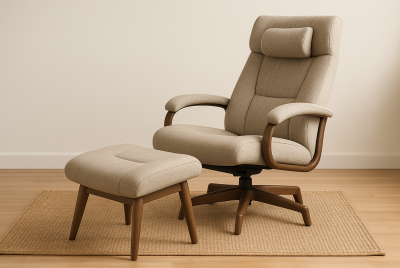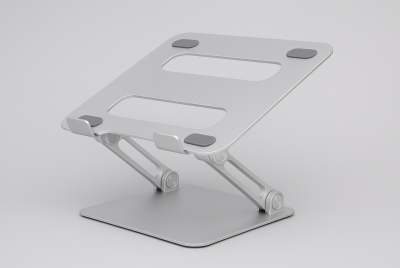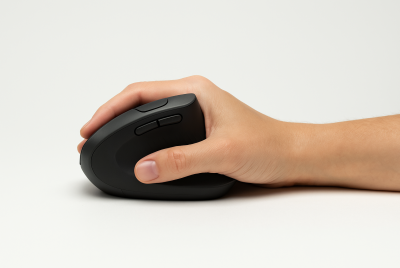Ergonomic Saddle Chair Benefits & Top Picks for 2025
We may earn a commission for purchases made using our links. Please see our disclosure to learn more.
Sitting for hours isn’t what your body was made for. If you’ve got back pain, poor posture, or that constant slouch, your chair could be the problem. Most standard office chairs don’t support your spine the way they should. Over time, that leads to aches, stiffness, and fatigue. That’s where the ergonomic saddle chair comes in. Its unique shape mimics horseback riding. It helps align your spine, open your hips, and keep you upright—naturally. In this guide, we’ll show you what makes saddle chairs different, which ones are worth it, and how they can change the way you work for good.
What Is an Ergonomic Saddle Chair?
Saddle chairs promote active sitting by tilting the pelvis forward and engaging core muscles—similar to other posture-friendly options like ergonomic stools for office workers.
The design takes inspiration from horseback riding. Sounds odd? Maybe. But this riding posture forces your core muscles to activate and keeps your spine aligned—which is exactly what our bodies need during long periods of sitting.
Many ergonomic saddle chairs come with:
- Adjustable height and tilt
- Backrests (optional)
- High-density foam or memory foam cushioning
- 360-degree rolling wheels for mobility
It’s not just about sitting—it’s about sitting smart.
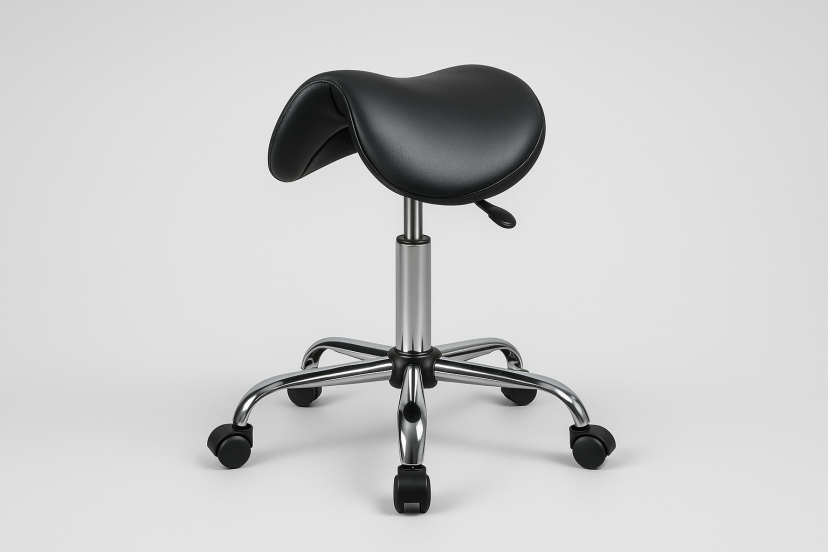
5 Best Ergonomic Saddle Chairs You Can Buy on Amazon
Ready to make the switch? Below are five ergonomic saddle chairs that blend comfort, function, and great reviews.
1. Master Massage Ergonomic Saddle Stool
- Ergonomically sculpted seat
- Height adjustment from 20″ to 29″
- Heavy-duty steel frame
- Quiet, smooth casters
Why you’ll love it: The contoured seat molds to your body and helps reduce hip tension. Great for massage therapists, artists, and remote workers alike.
2. Antlu Saddle Stool Rolling Chair
- Soft PU leather seat
- Easy assembly
- Budget-friendly
- Available in multiple colors
Perfect for: Small home offices, salons, or craft rooms where mobility and support are key.
3. DR.LOMILOMI Saddle Chair with Backrest
- Backrest included for lumbar support
- Silent rolling wheels
- Ideal for dental or beauty professionals
- Comfortable even during long shifts
Why users rave: Many reviewers say this chair helped alleviate chronic pain and made their daily work routines far more comfortable.
4. Grace & Grace Professional Saddle Stool
- Anti-exploding plate for safety
- Thick, molded foam seat
- 360° swivel
- Stylish and professional design
The Grace & Grace model is perfect if you need a little more cushion without sacrificing ergonomics.
5. Jobri BetterPosture Saddle Chair
- Designed by posture specialists
- Dual-density foam seat
- Tilt mechanism for spinal support
- Used in medical and corporate environments
This is a premium choice for those who spend 6+ hours a day seated and want lasting results in posture and comfort.
What Makes a Saddle Chair “Ergonomic”?
Good question. “Ergonomic” isn’t just a marketing buzzword. It means the chair is designed to work with your body—not against it.
Here’s what an ergonomic saddle chair does right:
- Pelvic tilt: Encourages a forward tilt to help your spine stack properly.
- Open hip angle: Reduces pressure on your hips and thighs, boosting circulation.
- Engages core muscles: Forces subtle movement that prevents stiffness.
- Improves posture: No more hunching over your laptop.
- Reduces back pain: Especially in the lumbar area, by redistributing pressure evenly.
Benefits of Ergonomic Saddle Chairs
Scientific studies strongly support the use of ergonomic saddle chairs for posture correction and musculoskeletal health. A systematic review on ergonomic saddle seats from the International Journal of Dental Hygiene concluded that saddle chairs help improve seated posture and reduce physical strain, particularly in clinical and professional settings. Another comprehensive review on musculoskeletal impact and saddle seating, published by Wiley, emphasized the role of saddle chairs in minimizing ergonomic risks when paired with tools like magnification loupes. Together, these findings highlight the practical advantages of integrating saddle seating into daily work routines. Check out our guide to car ergonomic tips to stay comfortable and supported on the road, too.
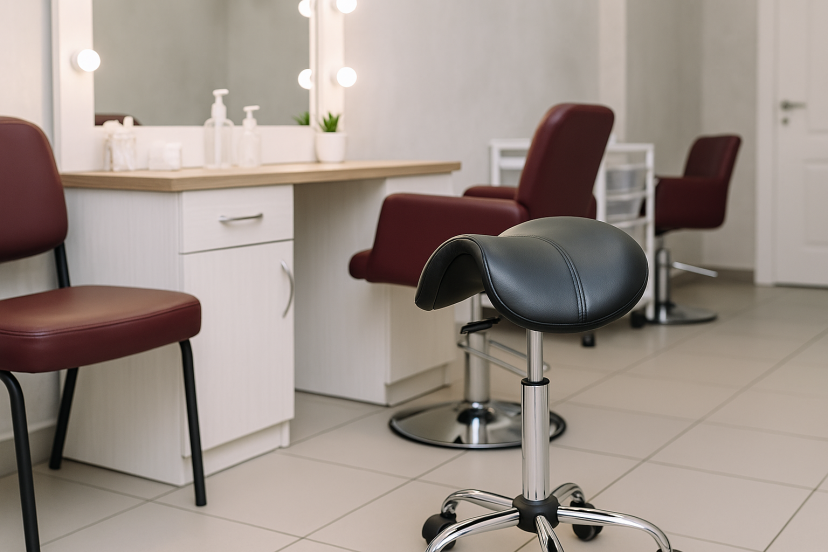
Where You Can Use a Saddle Chair
These aren’t just for dentists and hair stylists anymore. Saddle chairs have made their way into:
- Home offices
- Tech and design studios
- Clinics and hospitals
- Art and sewing rooms
- Salons and spas
If you sit for long stretches, you’re the target audience.
How to Choose the Best Ergonomic Saddle Chair for You
Not all saddle chairs are created equal. Here’s what to look for:
Adjustable Height
You’ll need a chair that aligns with your desk height and leg length. Too low or too high, and you won’t get the benefits.
Backrest (Optional but Helpful)
If you’re transitioning from a traditional chair, having a backrest might ease the shift.
Cushion Quality
Look for memory foam or high-density padding. Thin cushioning leads to pressure points over time.
Frame and Wheels
Sturdy materials like aluminum or steel are more durable. Smooth-gliding casters are a must for mobility.
Weight Limit
Check weight specs before buying—especially if you’re using it for professional tasks that require long hours.
Pros and Cons: Saddle Chair vs. Regular Office Chair
| Feature | Saddle Chair | Traditional Chair |
| Posture Support | Excellent | Moderate |
| Comfort for Long Use | High (with break-in) | Varies |
| Movement Encouraged | Yes | Limited |
| Core Activation | Active | Passive |
| Back Pain Relief | Often immediate | Not always |
| Learning Curve | Takes 1–3 days to adjust | None |
Is there a learning curve? A little. But the payoff is better posture and less pain.
How Much Time Does It Take to Get Used to It?
Typically, 2 to 5 days. Your hips and core may feel slightly sore—similar to after a light workout. That’s a good sign. It means your muscles are waking up and supporting you correctly. Start slow. Try alternating between your old chair and the saddle stool for short intervals, then gradually increase usage each day.
Final Thoughts
Here’s the deal—if you spend hours sitting every day, a traditional chair is probably working against you. An ergonomic saddle chair can help correct your posture, relieve tension in your lower back, and even improve focus and energy. Sure, it may look different. But the benefits? They’re undeniable. Whether you’re working, creating, or caring for others, investing in your comfort and spine health is never a bad idea.
FAQs
1. Can a saddle chair improve posture?
Yes, absolutely. The forward tilt of the seat aligns your spine and encourages a natural upright posture.
2. Are saddle chairs good for tall people?
Most models offer adjustable height settings. Be sure to check specs and reviews to ensure it fits your body frame.
3. Do these chairs work with standing desks?
Yes. In fact, many people use them as part of a sit-stand routine to avoid stiffness.
4. Is there a break-in period?
A short one. For most users, it only takes a few days to get used to the new sitting position. Start slow and increase usage as your body adapts.
5. How often should I replace my saddle chair?
With good care, a quality saddle chair can last several years. Replace if the cushion flattens or mobility features stop working.


